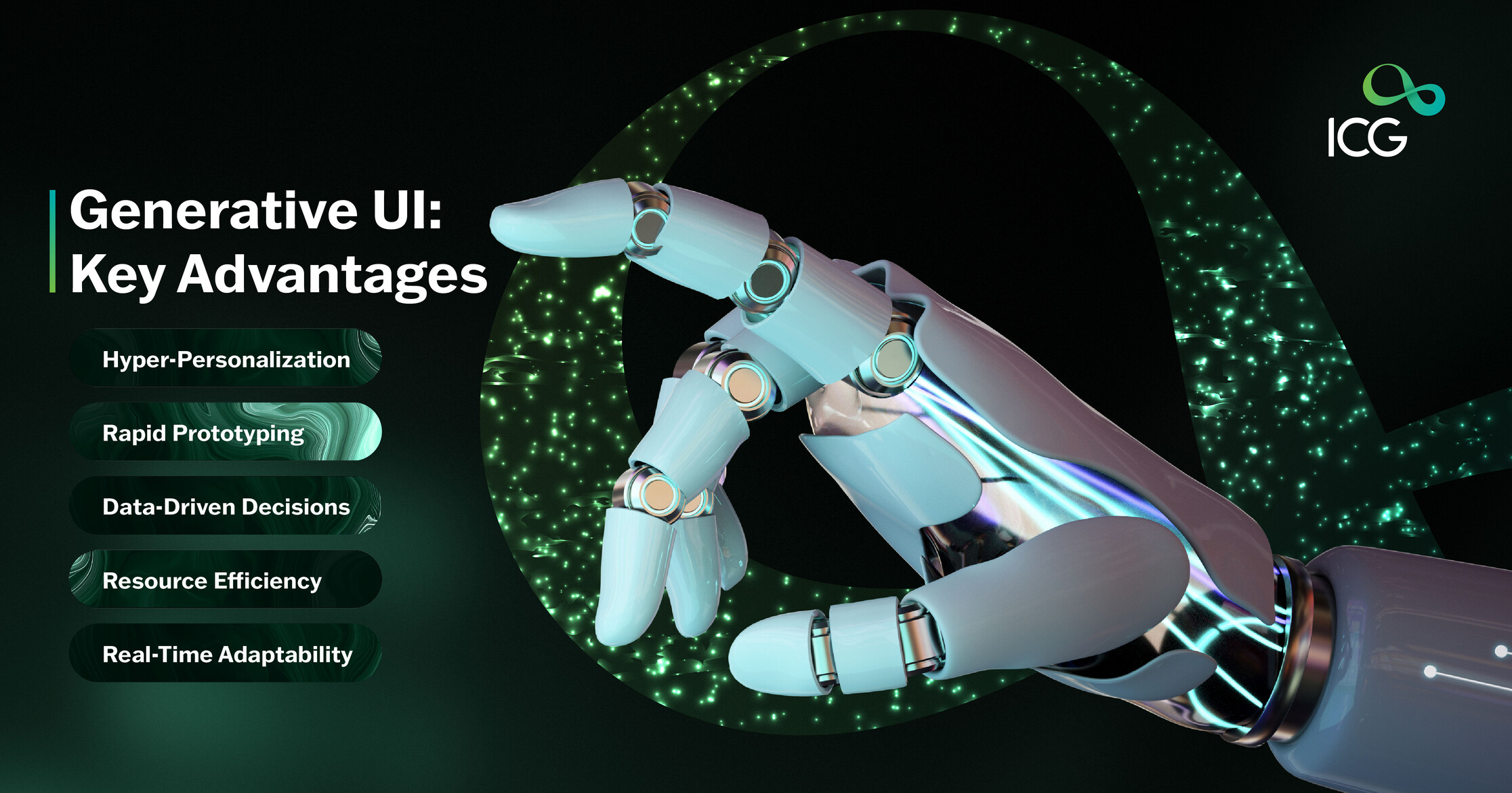A new design paradigm is emerging in the dynamic world of B2B to reshape the way we interact with software and applications. Generative UI, a cutting-edge approach powered by artificial intelligence, is poised to revolutionize the design process, promising to deliver personalized, data-driven, and highly efficient user interfaces. Imagine a design tool that doesn’t just help you create – it collaborates, innovates, and adapts alongside you. This is the transformative potential of Generative UI.
Historically, building user interfaces has been a meticulous, time-consuming endeavor. Designers carefully craft each element, from layouts and color schemes to typography and interactions. Generative UI, however, throws this traditional model out the window. By harnessing the power of AI, it empowers designers to provide high-level parameters and let the algorithm take the reins. The result? A multitude of design options generated in mere seconds, each tailored to specific user needs and business goals.
This paradigm shift has far-reaching implications for B2B environments. Imagine personalized dashboards that adapt to each user’s role, streamlining workflows and boosting productivity. Envision data visualizations that evolve in real-time based on user interaction, making complex information more accessible and actionable. Consider e-commerce platforms that dynamically generate product recommendations and layouts based on individual preferences, ultimately driving higher engagement and conversion rates. The possibilities are boundless.
How Does the Magic Happen? A Look Under the Hood
Generative UI is built on the foundation of machine learning. At its core are models trained on massive datasets encompassing design elements, user behavior, and performance metrics. When you provide your design constraints – such as target audience, brand guidelines, or desired functionality – the model analyzes this input, identifies patterns, and predicts what would resonate most with your users. It then leverages this knowledge to generate an array of design variations, experimenting with layouts, colors, typography, and even micro-interactions.

The Generative Advantage: Why Your Business Should Pay Attention
- Hyper-Personalization: Generative UI takes personalization to the next level. By analyzing user data and behavior, it creates tailored experiences that boost engagement and satisfaction.
- Rapid Prototyping and Iteration: Generative UI’s speed at producing design options is a game-changer. It allows for rapid prototyping and testing, enabling you to quickly iterate and refine your designs based on user feedback. As a result, it accelerates the product development cycle, getting your solutions to market faster.
- Data-Driven Decision Making: Generative UI isn’t just about creating pretty designs; it’s about optimizing for results. By integrating performance metrics into the design process, you can track how different variations impact user behavior and make data-driven decisions to improve your products. This continuous optimization loop can lead to substantial gains in conversion rates and overall user satisfaction.
- Resource Optimization: Manual design is labor-intensive and costly. Generative UI automates a significant portion of this process, freeing up your design team to focus on strategic initiatives and complex challenges. Therefore, it leads to a more efficient allocation of resources and a higher return on investment.
The B2B Frontier: Generative UI Use Cases
Generative UI is already making waves in the B2B world:
- Einstein: AI platform, Einstein, uses generative AI to analyze customer data and generate personalized recommendations for sales representatives, improving their ability to close deals and build stronger relationships.
- The Grid: This AI-powered website builder leverages generative design to create visually appealing and responsive websites based on user input, saving businesses valuable time and resources.
- Autodesk Dreamcatcher: This software allows engineers and designers to input design parameters and constraints, generating optimized designs for products like bike frames or car parts.
Embracing the Generative Future
The impact of Generative UI is set to be profound. As this technology matures, it will empower businesses to create more personalized, engaging, and efficient digital experiences. From internal tools like dashboards and reporting systems to customer-facing applications like e-commerce sites and marketing campaigns, the potential for transformation is immense.
By adopting Generative UI, you’re not just adopting a tool; you’re embracing a new way of thinking about design. It’s about moving from static, pre-defined interfaces to dynamic, adaptive experiences that respond to the unique needs and preferences of your users.
The ICG Approach
At ICG, we offer a customized approach that empowers your teams with the latest insights and technology expertise to navigate the demands of today’s digital age. As Saudi Arabia embarks on its digital transformation journey, ICG plays a pivotal role in shaping the Kingdom’s tech landscape by providing cutting-edge solutions, strategic consultancy, and fostering innovation. Our comprehensive guidance, from fundamental concepts to practical implementation, helps organizations mitigate risks, stay ahead of the competition, and unlock their full potential in the accelerating digital environment.
Ready to Talk?
Request your free Consultation to learn more about ICG’s capabilities and enablement to embark on a transformative expedition toward the summit of success.








